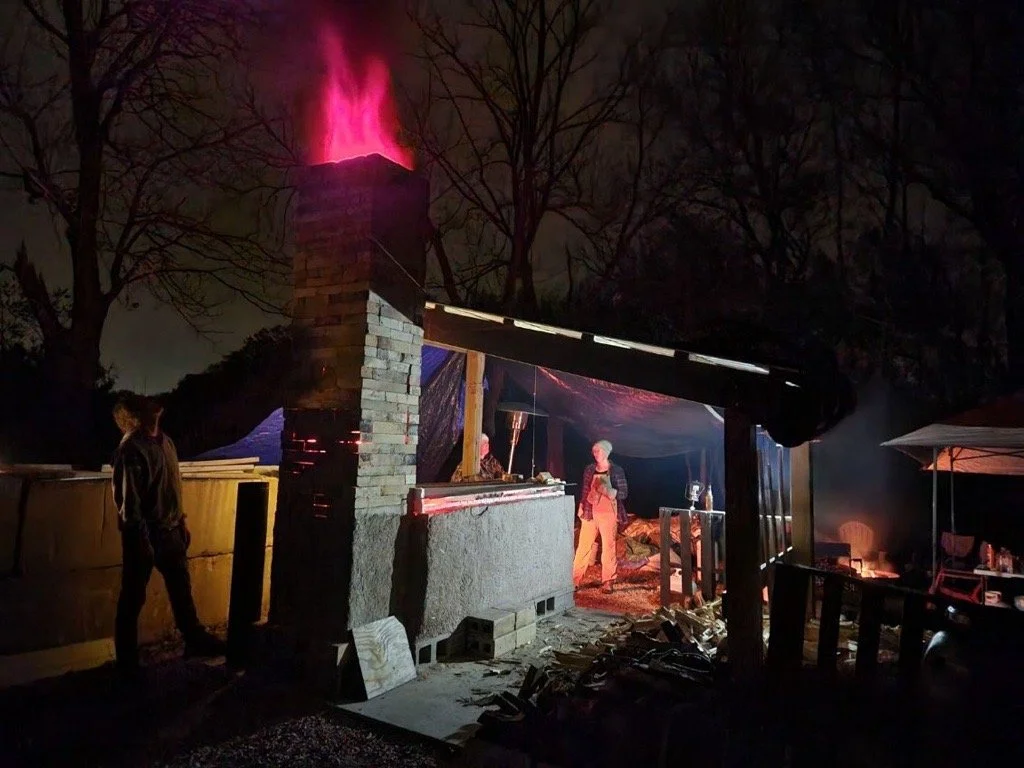OUR PROCESS
“We do not work alone. Man can make a bowl of clay. He can make it round and smooth, but until it is fired it cannot be used. Man can lay the fire and light the flame. But still it is the fire itself that really completes the bowl. And that fire is something bigger and more wonderful than any man.”
Wood firing is a collaboration. We are not solo artists.
The fire, the weather, and our natural surroundings directly impact our process and our work. Similarly, our process and our work are deeply influenced by our fellow artists and the friends, family, and neighbors who have contributed to every part of our setup: the kiln, the shack, the woodshed, the studio, and the wood we burn.
The Kiln
Traditional anagama kilns originated in China and were refined by the Japanese in the 5th century. They are tunnel-shaped, room-sized kilns that a person (or multiple people) can fully enter during the loading and unloading processes. These kilns can often hold thousands of pieces.
Like a traditional anagama, our kiln has a single chamber, with pottery stacked in the back two-thirds and a fire box in the front third. Our kiln is relatively small and designed to hold around 150 pieces. It has a removable top made of refractory material to allow easier loading and unloading. The design allows for hot air, flames, and smoke from burning wood to interact directly with the pottery, resulting in natural ash glazes and varied surface effects that are only achievable by wood firing.
Firing
We generally fire with a crew of at least 6 people who take turns stoking the fire, opening and closing the stoke hole door, managing the wood supply, and monitoring the chimney, among other tasks.
The kiln requires a constant supply of wood to get up to temperature (Orton cone 10-13, or around 2300-2400°F). We continuously stoke the fire over 10-12 hours, making adjustments based on temperature fluctuations and the type of smoke and/or flame that are exiting the chimney. Our kiln is designed to be fired relatively quickly while achieving effects similar to those of a traditional anagama kiln (many of which are fired for several days).
Firing #7 during a downpour



